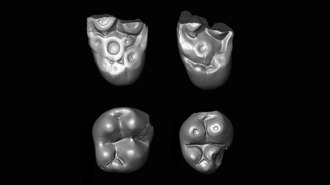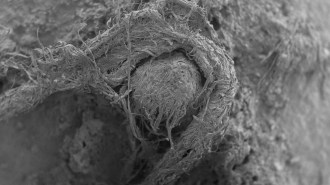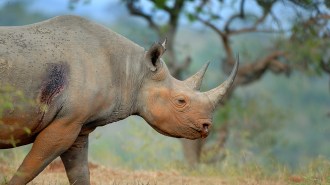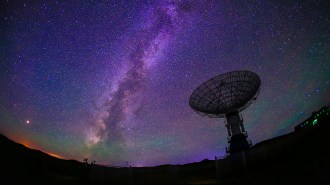News
-
 Animals
AnimalsSeabirds may find food at sea by flying in a massive, kilometers-wide arc
Radar shows that seabird groups can fly together in giant “rake” formations. If they are cooperating to find food, it’s on a scale not yet seen in the birds.
By Jake Buehler -
 Health & Medicine
Health & MedicineWhy African-Americans may be especially vulnerable to COVID-19
African-Americans are more likely to die from COVID-19 than white Americans, data show. Experts blame long-standing health disparities.
By Sujata Gupta -
 Health & Medicine
Health & MedicineMeet Sophia Upshaw, a volunteer in a coronavirus vaccine trial
In Seattle and Atlanta, scientists have started testing the safety of a potential vaccine to prevent COVID-19.
-
 Physics
PhysicsA year after the first black hole image, the EHT has been stymied by the coronavirus
With this year’s observing run canceled due to the coronavirus, the Event Horizon Telescope team is analyzing data from 2017 and 2018.
-
 Health & Medicine
Health & MedicineCan fabric masks stem the coronavirus’ spread?
It’s unclear whether homemade masks made from fabric will prevent an infected person from spreading the virus to others, experts say.
-
 Paleontology
PaleontologyTwo primate lineages crossed the Atlantic millions of years ago
Peruvian primate fossils point to a second ocean crossing by a now-extinct group roughly 35 million to 32 million years ago.
By Bruce Bower -
 Physics
PhysicsCollisions reveal new evidence of ‘anyon’ quasiparticles’ existence
Scientists report evidence that a class of particle called an anyon appears in two-dimensional materials.
-
 Health & Medicine
Health & MedicineWarm weather probably won’t slow COVID-19 transmission much
While some evidence has suggested higher temperatures can affect coronavirus transmission, summer’s arrival probably won’t curb the pandemic much.
-
 Archaeology
ArchaeologyThis is the oldest known string. It was made by a Neandertal
A cord fragment found clinging to a Neandertal’s stone tool is evidence that our close evolutionary relatives were string makers, too, scientists say.
By Bruce Bower -
 Animals
AnimalsHitchhiking oxpeckers warn endangered rhinos when people are nearby
Red-billed oxpeckers do more than just eat parasites from rhinos’ backs. The birds can alert the hunted mammals to potential danger, a study finds.
-
 Space
SpaceNew search methods are ramping up the hunt for alien intelligence
Six decades of radio silence hasn’t stopped scientists searching for intelligent life beyond Earth. In fact, new technologies are boosting efforts.
-
 Climate
ClimateThe largest Arctic ozone hole ever measured is hovering over the North Pole
A strong polar vortex in early 2020 led to what may be a record-breaking hole in the ozone layer over the Arctic.